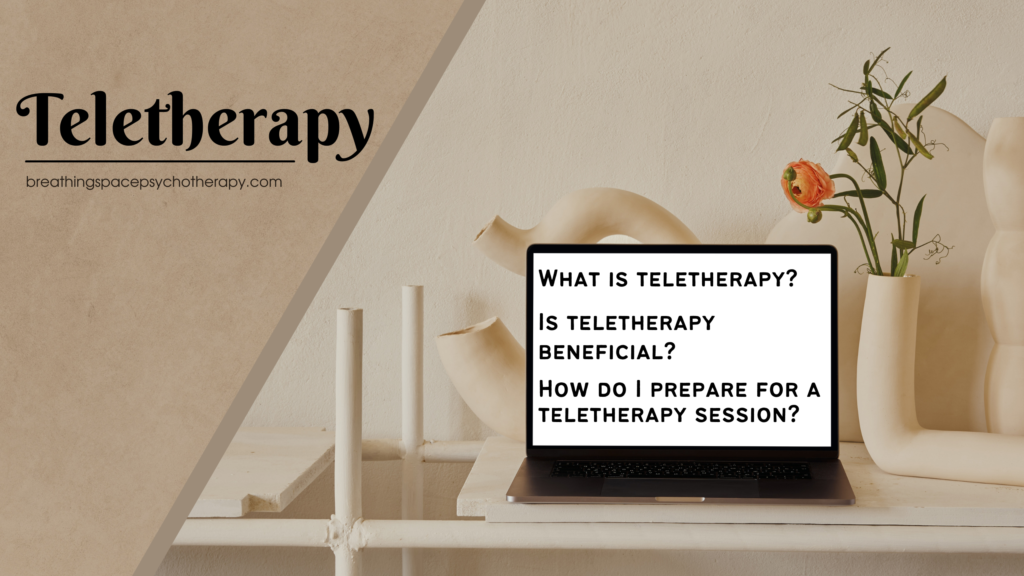How does teletherapy work?
Teletherapy works nearly the same as in-person therapy.
Clients seek out online mental health providers, schedule individual or group therapy sessions in advance, and prepare for their sessions almost as they would for in-person (more on how to prepare for a teletherapy session below). The sessions are conducted similarly to in-person sessions: live interactions between the therapist and client in which you get to know your therapist and ask questions and talk about what’s been bothering you.
Who can use teletherapy?
If you have a phone, tablet, laptop, or other smart device and service or an online connection, then you can use teletherapy.
Teletherapy is appropriate for all ages and includes individual, couples, group, and family sessions. It can be used for treating:
- depression,
- anxiety,
- post-traumatic stress disorder (PTSD),
- autism spectrum conditions,
- attention deficit hyperactivity disorder (ADHD),
- learning differences,
- conditions affecting speech or thinking,
- and more.
Is teletherapy effective?
Teletherapy has been found to be comparable to in-person therapy.
Reports have also included:
- reduced length of hospitalization,
- better medication adherence,
- symptom reduction of disorders, and
- effective therapy such as using evidence-based treatments for posttraumatic stress disorder, including group cognitive processing (Donald, 2013).
What are the advantages of teletherapy?
The biggest advantage of teletherapy is greater accessibility and more reach.
Especially now, most Americans are able to connect to the internet or connect with one another virtually. Teletherapy allows individuals who may not be able to receive in-person treatment or would face great difficulties, such as individuals who:
- live in rural areas,
- are physically ill,
- are not able to leave the house, or
- have children and can’t find a babysitter.
Because teletherapy is remote, individuals can log into their therapy sessions from home or another comfortable space. Some people find it comforting to meet their therapist from the comfort and familiarity of their home, rather than facing an intimidating office building where they may feel more overwhelmed.
Teletherapy is also convenient and flexible: you don’t have to commute, worry about getting stuck in traffic, or anxiously wait in waiting rooms. So you save gas, money, and time!
What are the disadvantages of teletherapy?
In one study, participants expressed that they felt a lack of emotional engagement and naturalness (or in-person connection). Some participants noted that it’s easier to talk to people in person. Sometimes, the home environment makes it difficult to shift mindsets and be engaged in the therapy session.
A common concern about teletherapy is related to the internet connection. It can be difficult to communicate and be fully engaged in the session if the internet lags or your connection breaks.
Other possible disadvantages of teletherapy include:
- There could be more distractions in the background;
- The cues in teletherapy are different from in-person therapy cues.
- Certain types of therapy, such as play therapy, are restricted.
How do I prepare for a teletherapy session?
So, you’ve found a therapist and scheduled a teletherapy session. Here is a step-by-step guide on how to prepare for your teletherapy session:
- Clarify how to join: once you’ve scheduled your session, check in with your mental health provider to determine the teletherapy platform and how you can join.
- Make sure the paperwork (e.g. a consent form) is complete and your contact information is up-to-date.
- Set a reminder.
- Get ready ahead of time: getting ready even a few minutes before your session can ease you into your session rather than make you feel rushed and abrupt.
- Make sure your devices are charged and a charger and outlet are nearby;
- Test your connection to the internet;
- Test your technology, such as audio and video;
- Make sure you have any questions, worksheets, or paperwork ready (and a pencil!);
- Dress similarly to how you would dress if you were going to an in-person session. This can help you feel prepared and focused during your session.
- Try to minimize distractions:
- If you live with other people, let them know that you’ll be busy;
- Find a quiet space with a good connection;
- Set your phone to “do not disturb,” and set the notifications on your laptop to “priority only”;
- Use headphones or earbuds to help filter out noisy distractions.
- Prepare your space: making sure your space is clean and organized can also help keep you focused on the session. Bring a beverage and some tissues.
- Breathe: it can feel nerve-wracking and awkward talking with a therapist over the screen. So, take a moment before your session to breathe, and remember that it takes time before you are comfortable with anyone new, even your therapist.
- Log on: Now, you’re ready to log into your session and continue your journey of healing.





